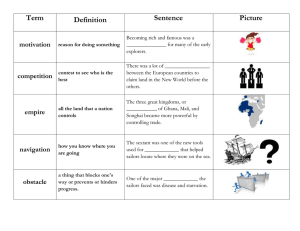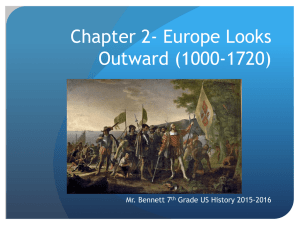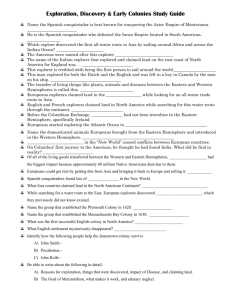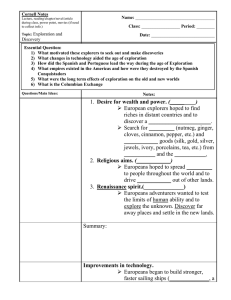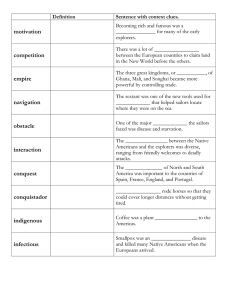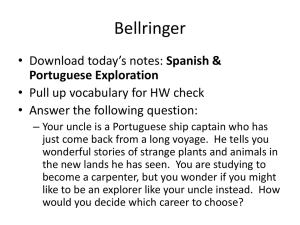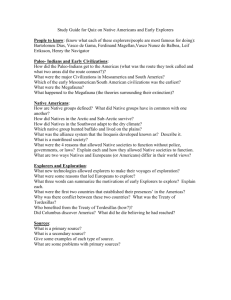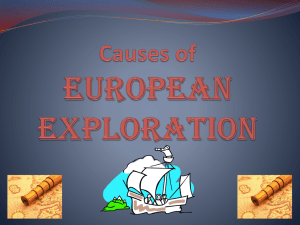Economic factors motivated Europeans to explore the world
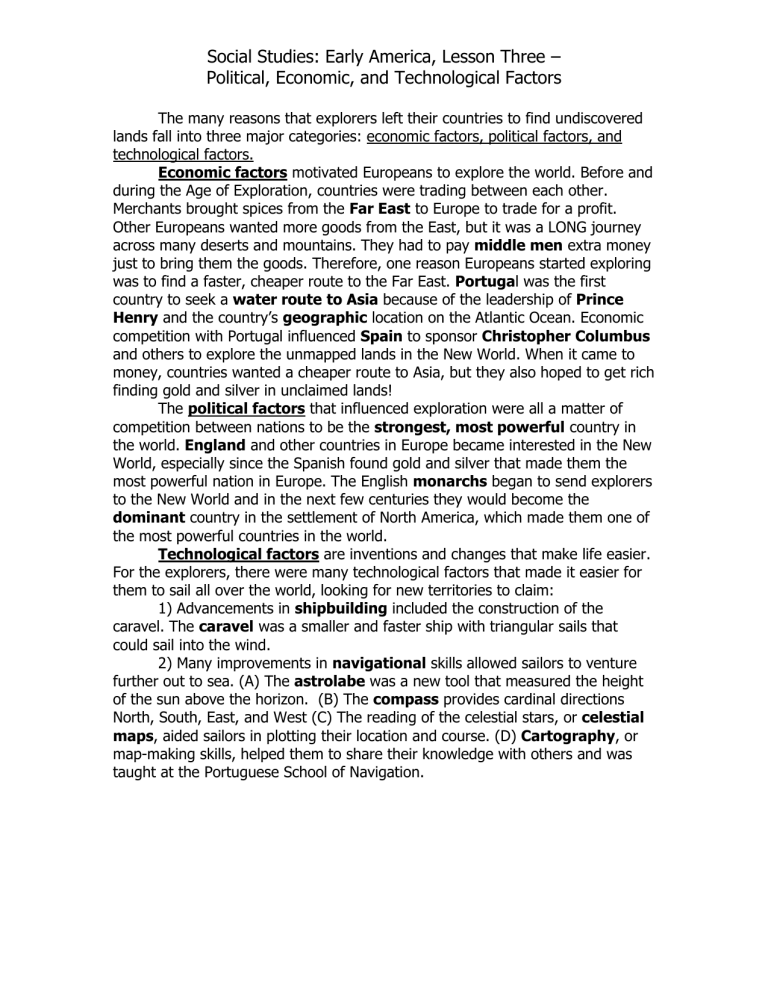
Social Studies: Early America, Lesson Three –
Political, Economic, and Technological Factors
The many reasons that explorers left their countries to find undiscovered lands fall into three major categories: economic factors, political factors, and technological factors.
Economic factors motivated Europeans to explore the world. Before and during the Age of Exploration, countries were trading between each other.
Merchants brought spices from the Far East to Europe to trade for a profit.
Other Europeans wanted more goods from the East, but it was a LONG journey across many deserts and mountains. They had to pay middle men extra money just to bring them the goods. Therefore, one reason Europeans started exploring was to find a faster, cheaper route to the Far East. Portugal was the first country to seek a water route to Asia because of the leadership of Prince
Henry and the country’s geographic location on the Atlantic Ocean. Economic competition with Portugal influenced Spain to sponsor Christopher Columbus and others to explore the unmapped lands in the New World. When it came to money, countries wanted a cheaper route to Asia, but they also hoped to get rich finding gold and silver in unclaimed lands!
The political factors that influenced exploration were all a matter of competition between nations to be the strongest, most powerful country in the world. England and other countries in Europe became interested in the New
World, especially since the Spanish found gold and silver that made them the most powerful nation in Europe. The English monarchs began to send explorers to the New World and in the next few centuries they would become the
dominant country in the settlement of North America, which made them one of the most powerful countries in the world.
Technological factors are inventions and changes that make life easier.
For the explorers, there were many technological factors that made it easier for them to sail all over the world, looking for new territories to claim:
1) Advancements in shipbuilding included the construction of the caravel. The caravel was a smaller and faster ship with triangular sails that could sail into the wind.
2) Many improvements in navigational skills allowed sailors to venture further out to sea. (A) The astrolabe was a new tool that measured the height of the sun above the horizon. (B) The compass provides cardinal directions
North, South, East, and West (C) The reading of the celestial stars, or celestial
maps, aided sailors in plotting their location and course. (D) Cartography, or map-making skills, helped them to share their knowledge with others and was taught at the Portuguese School of Navigation.

